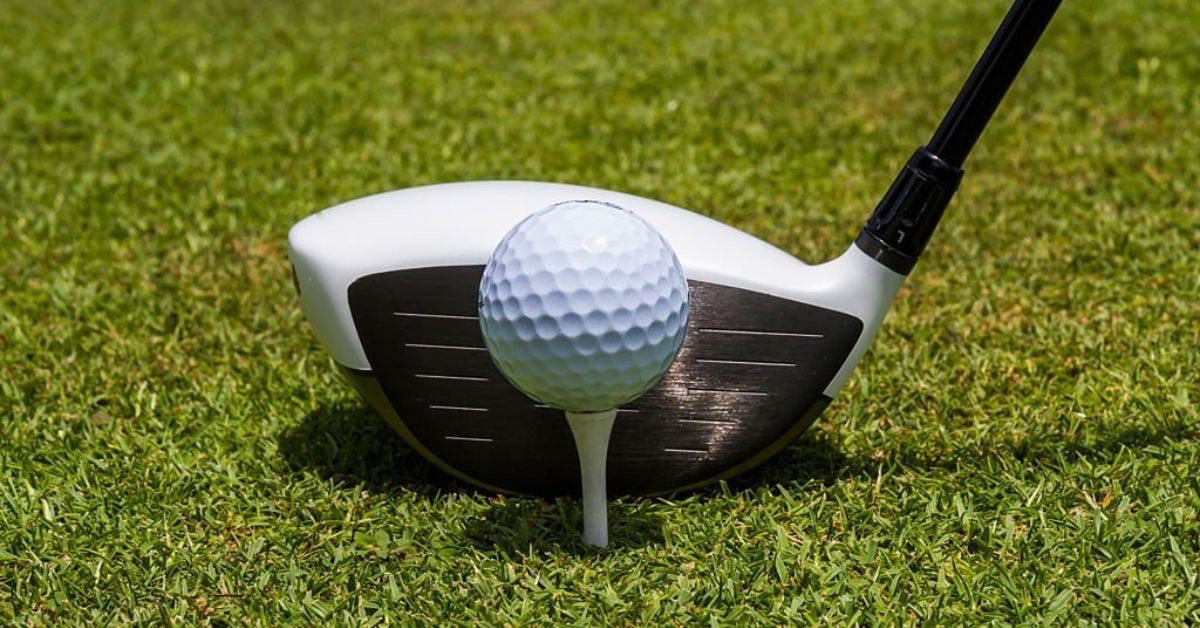Suffering from a lack of spin with the driver? We hear your frustration!
With low spin, it can be hard to get the ball airborne. This can make it very challenging to get the ball to travel any real distance before prematurely dropping out of the sky.
In this article, you’ll learn if your driver spin is too low, and 3 simple ways to increase your dynamic loft to get the ball launching higher and further off the tee.
Here’s Why Your Driver Spin Is Too Low
If your driver spin is too low, it’s likely due to not having enough dynamic loft for your swing speed. Ideally, driver spin rates are between 2000-3000 rpm. To achieve this, try increasing the loft angle of your driver, or using a higher-flex shaft. Alternatively, opt for a high-spin driver.

Is Low Spin Good For Driver?
Generally, low spin is good for maximizing distance with the driver, provided that you have enough swing speed and the correct launch angle. However, amateur golfers often benefit from more spin with the driver, which can lead to better accuracy.
Spin is caused by striking the ball at an angle. While every shot with the driver is subject to some degree of spin, the ideal amount varies largely based on your swing speed.
Golfers with faster swings benefit from less spin. For instance, the optimal spin rate for a player with 105+ mph club speed — common on the PGA Tour — is 1750-2300 rpm.
The reason? It’s optimal for faster ball speeds to launch at a lower trajectory. This maximizes distance, preventing the ball from getting caught up in the wind. Hence, those with very fast swing speeds will usually try to reduce driver spin.
PRO TIP: Low spin drivers are best for those with faster swing speeds.
On the other hand, golfers with slower swings need more spin. For example, someone who generates 72-83 mph club speed should be aiming for around 2600-2900 rpm.
Put simply, a slow, low-launching tee shot with minimal spin will cause the ball to drop out of the air prematurely. This results in very little distance — both carry and roll.
Instead, those with slower swings should increase the loft of their driver, launching the ball higher with more spin to help keep the ball airborne for longer.
PRO TIP: High spin drivers are best for those with slower swing speeds.
Remember, more loft equals more spin. So, if you need to increase your spin rate, then you should opt for a higher-lofted driver. Need less spin? Go for less loft.
Ultimately, low spin drivers are good for golfers who have no trouble getting the ball airborne off the tee. Conversely, you should opt for more spin with your driver if you find it difficult to get the ball in the air — which impacts distance.

Can Driver Spin Be Too Low?
Driver spin can be too low if you lack sufficient ball speed. Without enough speed, the ball will drop out of the air prematurely, resulting in low carry distances.
For example, if a golfer with a slower swing speed were to use a 7º driver off the tee, they would likely struggle to get the ball airborne with very little carry distance.
Likewise, if you have a significantly descending angle of attack into the ball — i.e. you hit down on the ball — then a low-loft, low-spin driver wouldn’t be ideal.
In both these instances, a club fitter would set them up with a higher-lofted driver in order to increase spin rates. This would increase the trajectory of their tee shots, to help keep the ball in the air without dropping prematurely.
However, most golfers are susceptible to having too much spin. In this scenario, it’s better to lower the driver loft, which has the effect of dropping the spin rate.

How to Increase Spin With the Driver
The way you deliver the clubface plays a big part in the amount of spin generated. For instance, a steeper angle of attack will always produce higher spin rates.
However, there are ways to increase driver spin without altering your swing:
- Increase the loft angle
- Use a high-spin driver head
- Switch to a higher-flex shaft
Let’s take a look at each of these in some detail.
1. Increase the Loft Angle
The easiest way to increase spin off the tee is to opt for a driver with a higher loft.
Put simply, more loft equals more spin. It’s the reason your wedges generate more spin than any club — striking the ball at a greater angle increases the rate of spin.
While lowering the driver loft will promote a flatter launch angle, increasing the loft will raise the launch angle. This means the ball launches at a higher trajectory.
2. Use a High-Spin Driver Head
Another way to increase spin is to use a high-launch driver model.
Today, manufacturers often produce several driver heads to suit different golfers. One common variant is a high-spin driver, which helps increase the launch angle.
Essentially, this helps golfers with slower swing speeds — as well as those who naturally de-loft at impact — launch the ball to achieve better distances.
3. Switch to a Higher-Flex Shaft
Finally, you can switch to a driver shaft with more flex.
In general, higher-flex shafts are designed for slower swing speeds, while stiff shafts are better suited to those with faster swing speeds.
Switching to a driver shaft with more flex will increase the dynamic loft of a driver at the point of impact, effectively launching the ball higher with more spin.

Conclusion
In summary, driver spin can be too low if you lack ball speed. Without enough speed, the ball will drop out of the air prematurely, resulting in low carry distances.
To increase spin with the driver, follow these steps:
- Increase the loft angle
- Use a high-spin driver head
- Switch to a higher-flex shaft
Ultimately, these equipment modifications will increase the dynamic loft at impact, increasing the spin rates to get the ball to launch higher and land softly.


